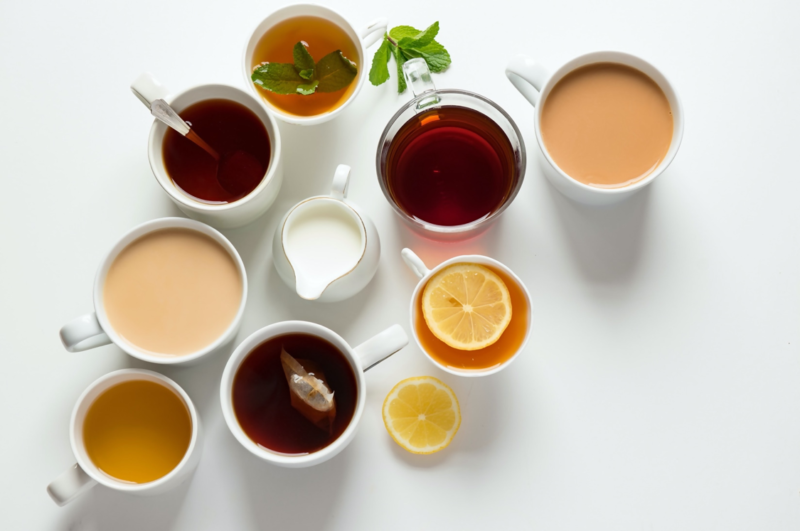
Figure 1. source
For some cultures, tea is more than just a drink. For the Chinese, Japanese, Indian, Russian, and English people, tea is a profoundly important part of their lives. In China, in particular, each regional group has its own philosophy of tea, and each ideological trend reinvents the implications that a cup of tea has in one’s day.
Great tea comes from remote mountains. Whether it’s white, green, or black, it conveys the essence of its natural surroundings. I’m not talking about overly processed tea that you can get at any store. I’m talking about delicate, potent, and clean tea that makes a world of a difference.
Choose Your Perfect Tea
We’re not talking about herbal infusion today. We’ll focus on real tea. There are five main types:
- White – It’s the most delicate type of tea. It’s made from the newest, freshest growth on recently opened buds from the tea bush. There’s no processing involved; the tea is plucked and dried. White tea has the lowest caffeine content when compared to the other types. That’s why it’s perfect for a calm evening.
- Green – It’s withered and rolled right after being plucked. There are many types of green tea. Matcha is the boss!
- Black – It contains more caffeine than green tea, so it’s perfect for any situation when you want to wake yourself up. Black tea will give you the energy you need to stay late and focus.
- Pu’erh – The tea leaf is aged, and then densely pressed. It almost looks like tobacco. It contains the most caffeine out of all other teas (almost as much as your usual cup of coffee). It’s the “aged wine” of teas.
- Oolong – This tea is very difficult to create and requires a long process of production. That’s why it’s usually more expensive. It’s beautiful flavor and aroma are worth paying for. It leaves a more complex aftertaste in your mouth.
Make Your Cup of Tea
The instructions on how to make tea perfectly depend on the type you choose. I’ll give you a few simple steps that work for any type of loose tea. They don’t work for Matcha; it’s a whole other category. But you can prepare your usual cup of white, green, black, oolong, or pu’erh tea if you get it in loose form.
- Do not use warm water out of the tap. Don’t re-boil water that was left in the kettle. You’ll have to use fresh cold water (preferably filtered) for your tea. It doesn’t take too long for it to boil, so you have no excuse. It’s important to do this right, since re-boiling takes a lot of the oxygen out of the water. Tea needs oxygen; otherwise it will leave a metallic aftertaste in your mouth.
- You don’t want the water to reach boiling. Green tea needs around 70℃, and black tea usually needs just under 100℃.
- Stir in the tea leaves in the boiling pot.
- Allow the tea to infuse the water for 3-4 minutes, depending on the desired strength. White tea needs more.
- Pour your tea into a nice cup. Porcelain cups are the best. Please do not drink tea out of a plastic cup!
You’ll Fall in Love with Tea
The more you research about tea and the way it’s made, the more you’ll fall in love with it. Tea has many health benefits, mainly because it’s rich in antioxidants and its caffeine levels make you feel energized. But for me, it’s the routine that makes it special.
I first get educated and make my choice. I know what effort went into that bag of tea and I’m not willing to search for a more affordable price on it. You don’t save your money on good tea. I have several bags of special selection tea in my special cabinet. I have a preferred cup for each type. I prepare my tea with mindfulness and I drink it with great enjoyment. This meditative attitude really makes the routine special.
It’s more than a drink. I see it as a magic potion that instantly lifts me up.

Leave a Reply